There are a lot of interesting studies and discoveries taking place in paleontology. As usual I’ll start in the distant past and go forward in time.

The Cambrian period in geologic history marks an important turning point in the history of life on Earth because it was during that time 540 to 520 million years ago (MYA) that multicelled organisms first developed hard parts, shells, spines and eventually bones. As I’ve said many times in these posts 99% of the fossils paleontologists find are just the hard parts of the creatures of the past. So fossils are very rare from the time before the Cambrian while they become much more plentiful from that time on.
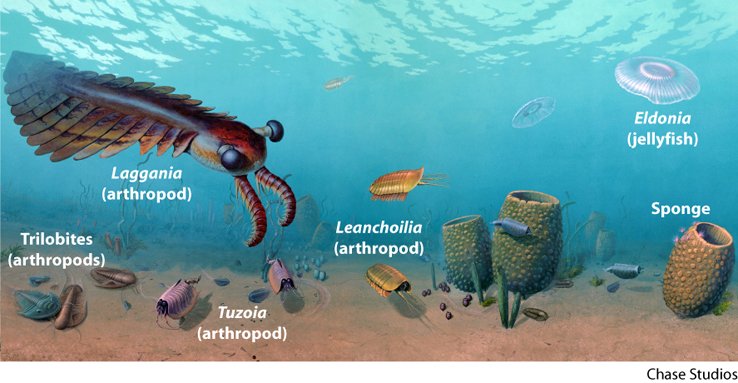
Now researchers in the UK think that they have found the earliest known animal to have a hard skeletal structure and they also think that it may be the earliest known predator to boot. The fossil was discovered in an outcrop of rocks in Charnwood Forest near Leicester in central England. The rocks that the specimen was found in date to 560 MYA, so the creature lived in a time just before the start of the Cambrian period.

As described by Frankie Dunn of the Oxford University Museum of Natural History the animal “…clearly has a skeleton, with densely packed tentacles that would have waved around in the water capturing passing food, much like corals and sea anemones do today.” O’k, so the creature wasn’t exactly a predator like a lion or a shark but remember this would be the world’s first predator, the first animal to grab another animal and eat it.
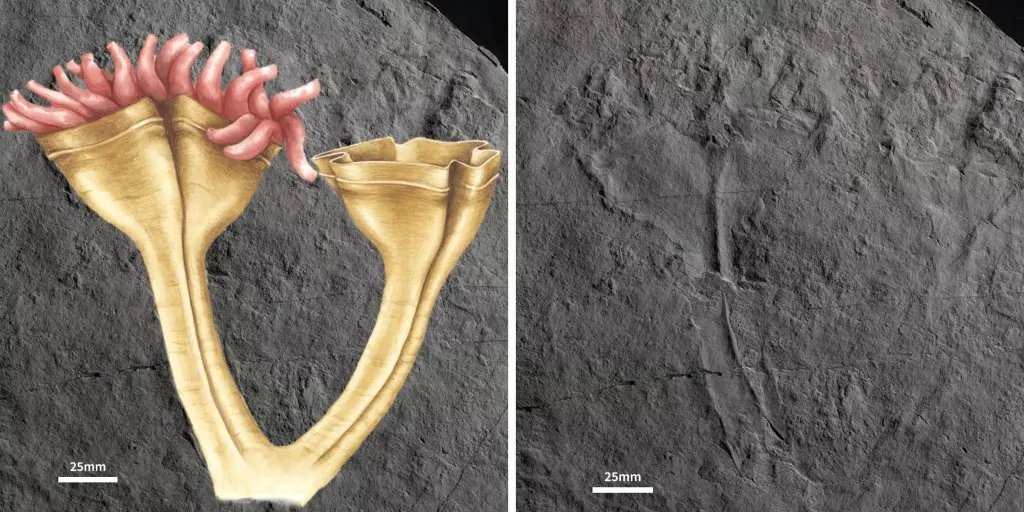
Perhaps the best part of this first predator was the name that the paleontologists gave it, Aurorlumina attenboroughii. The genus name means ‘Dawn Lantern’ and comes from the creature’s resemblance to a blazing torch. Of course the species name is an honour to the great British naturalist and broadcaster Sir David Attenborough, who actually used to go fossil hunting in his youth in the very area where A attenboroughii was discovered.
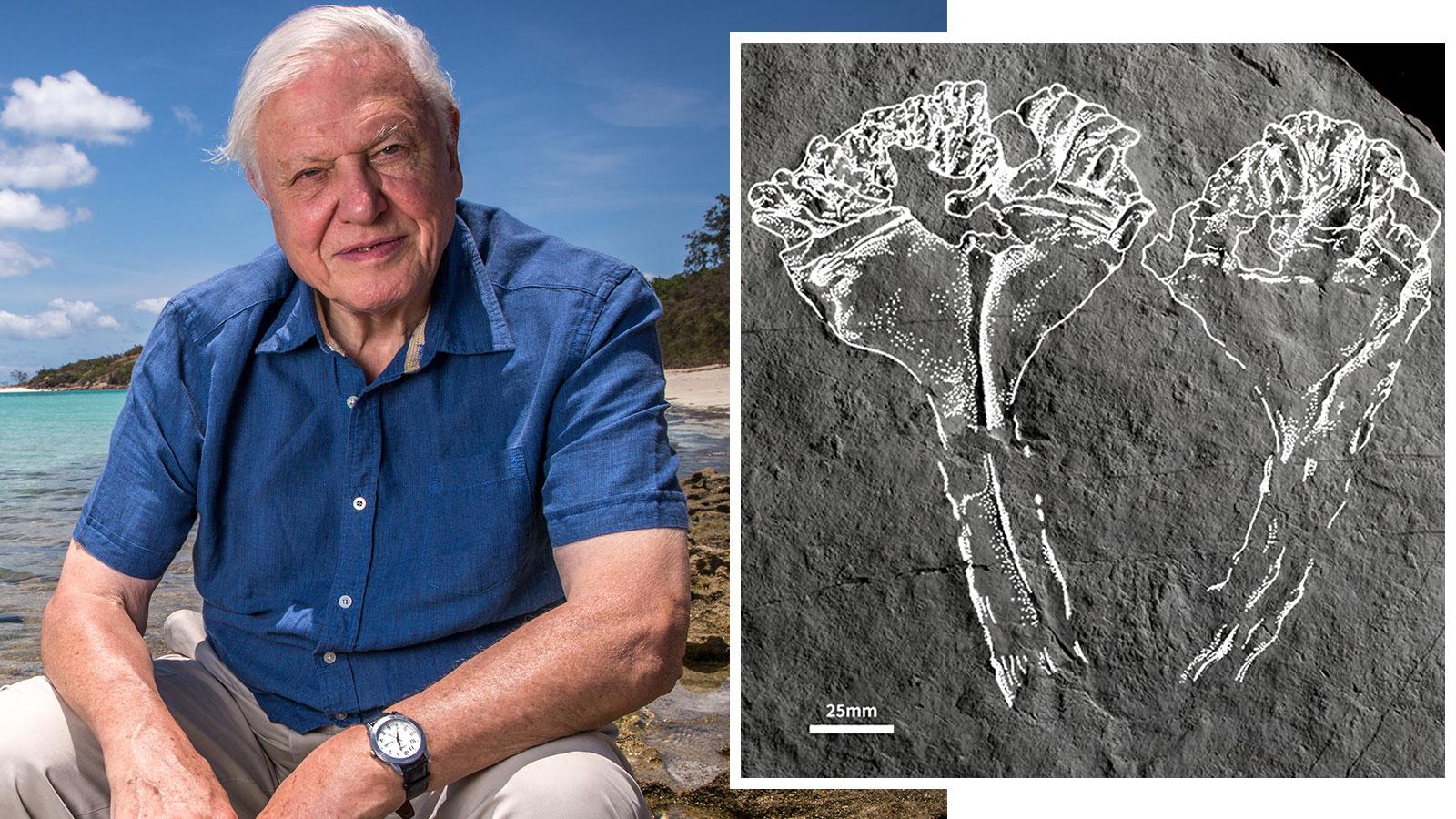
Going forward in time about 200 million years we come to another critical moment in the history of life, the time when the first vertebrate fish began to walk on land. That fish is the ancestor of all the land vertebrates that came after and at present our best guess for the species that achieved that feat is Tiktaalik roseae, a flat headed lobe finned fish about a meter and a half in length who walked upon the bottom of shallow streams and ponds during the late Devonian period some 365 MYA. Looking at T roseae it is clear that, in times of drought, this fish could have lifted itself out if the water and clumsily walked to the next, larger pond or stream. T roseae was discovered at a location on Ellesmere Island in the Canadian Province of Nunavut and which lies north of the Artic Circle.

Now a new specimen has been discovered at a site only 1.5 km from the location where T roseae was found and critically about 80m below the rock strata that contained Tiktaalik. That means that the new species, which has been given the name Qikiqqtania wakei, is perhaps a million years or so older. Like T roseae, Q wakei has four strong lobe fins that could have been used to ‘walk’ along the bottom. According to lead author and co-discoverer Thomas Stewart of the Biology Department at Pennsylvania State University however a careful examination of the animal’s humerus bone indicates that unlike T roseae, Q wakei was evolving to swim better, not walk on land.
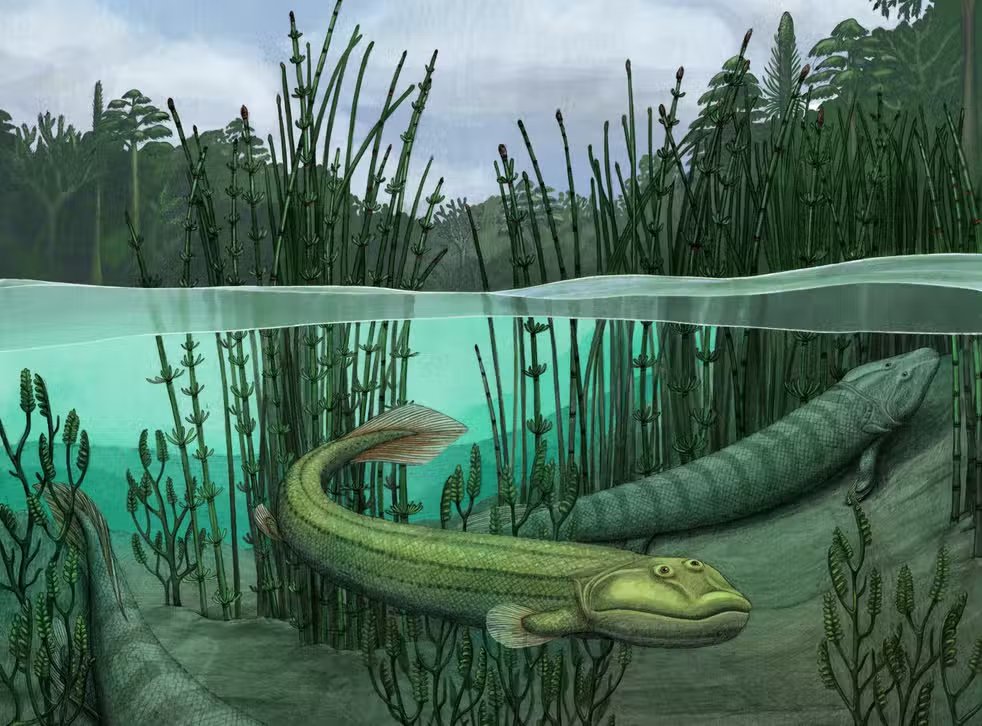
Professor Stewart speculates that like T roseae, Q wakei lived in shallow streams and ponds but unlike its later cousin, which crawled onto the land occasionally, Q wakei turned around and headed back to deeper water. If that is so then Q wakei represents one of the greatest ‘missed opportunities’ in the history of life. It could have conquered the land a million years before its cousin T roseae, it could have become the ancestor of all land vertebrates, all amphibians, reptiles, birds and mammals, even us, but it didn’t. Instead Q wakei took the safe route and returned to a more familiar, more comfortable environment, letting another species be the one that changed the world.

Moving ahead about another 100 million years and vertebrates were now flourishing on the land as new species of amphibians and reptiles were evolving and it wouldn’t be long before the first ancestors of the mammals appeared. These early mammals like creatures are known as caseids and now paleontologists from the University of Freiberg and the Dinosaur Museum Altmühltal in Dekendorf, both in Germany, have described a new species of caseid that they feel very much resembles a well know modern descendant.
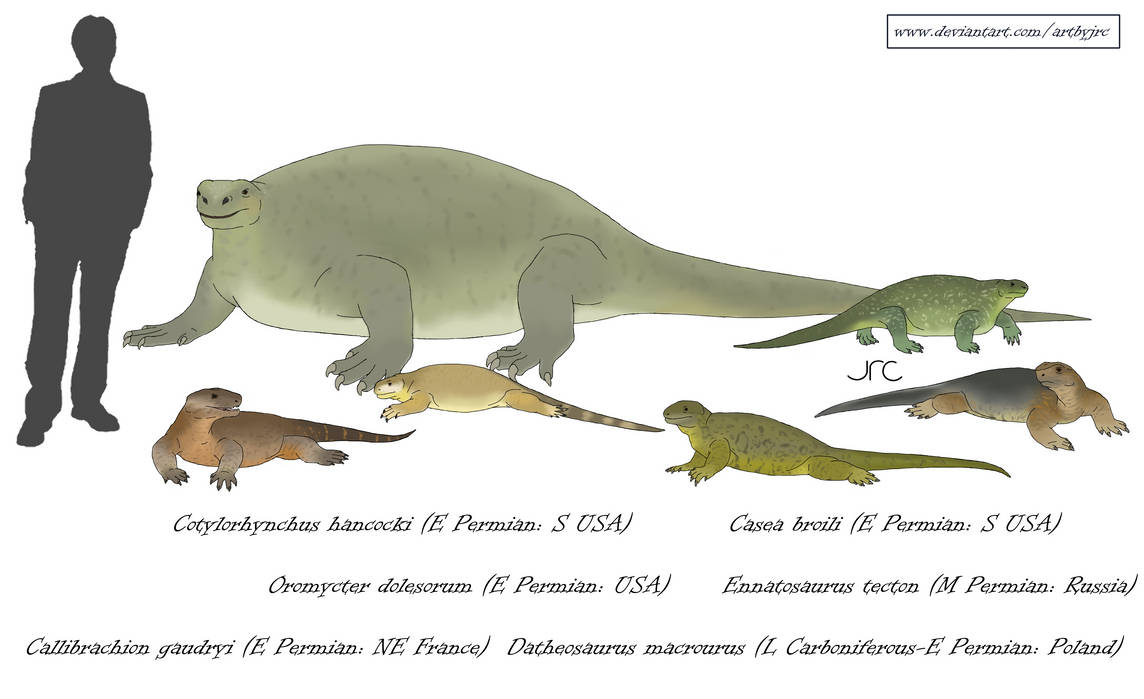
The animal has been named Lalieudorhynchus gandi and it lived about 265 million years ago at the time when all of the continents were joined together into one ‘supercontinent’ called Pangaea in what is today the Lodѐve region of southern France. Based analysis on the fossil bones, which consist of two large ribs, each about 60cm in length along with a femur, 35cm long and a shoulder blade 5 cm long, the paleontologists have reconstructed L gandi as a 4-meter long pudgy lizard with a small head that lived a semi-aquatic life similar to that of a modern Hippo.
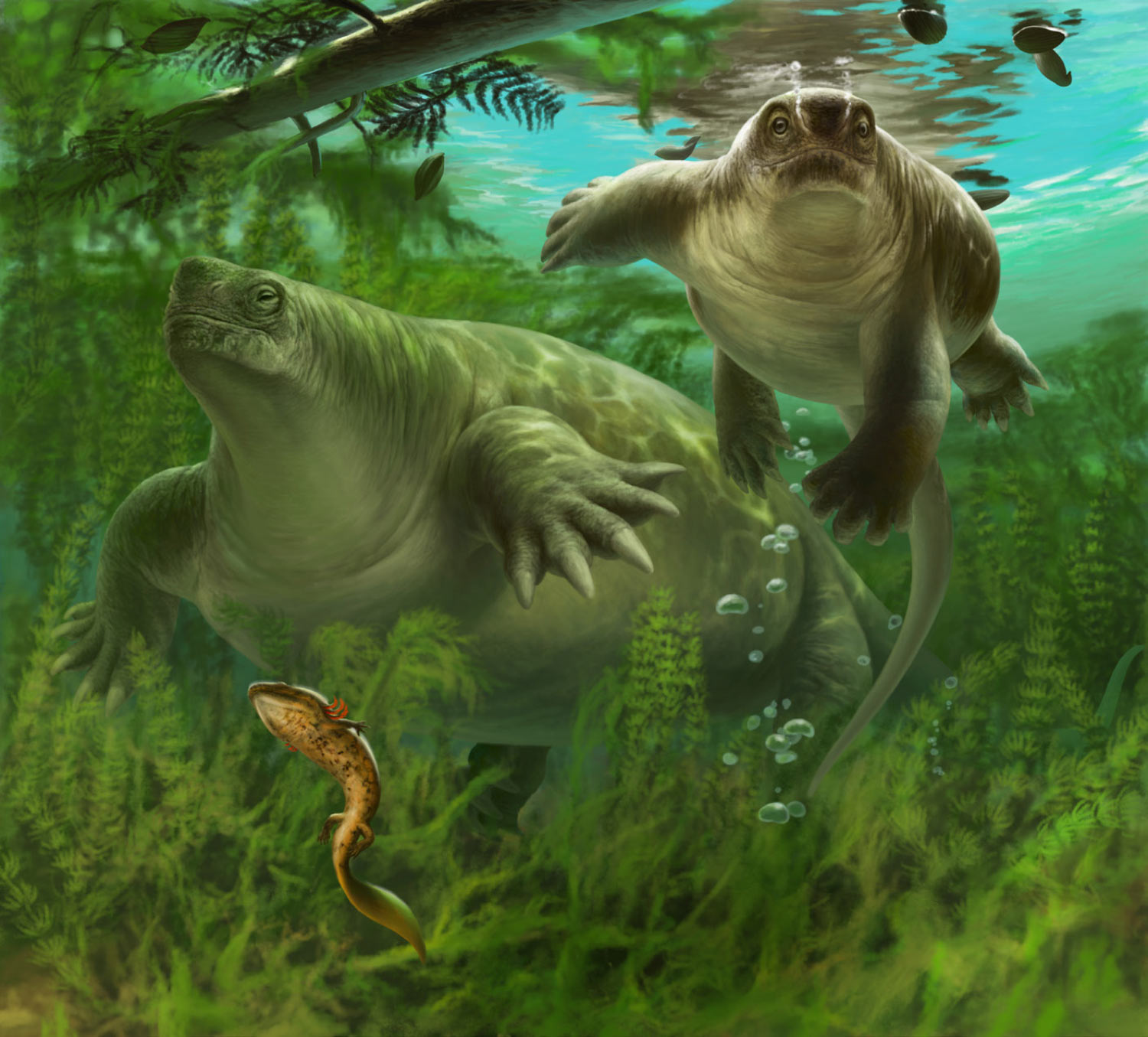
Like a hippo, L gandi was an herbivore, grazing on the aquatic plants that grew in lakes and rivers. When examined under a microscope the animal’s bones were found to have a spongy texture, indicating that L gandi spent much of the time in water where buoyancy would help support its several hundred kilos of mass. As one of the earliest known caseids the paleontologists hope that L gandi will teach us a great deal about this important group of per-mammalian reptiles.
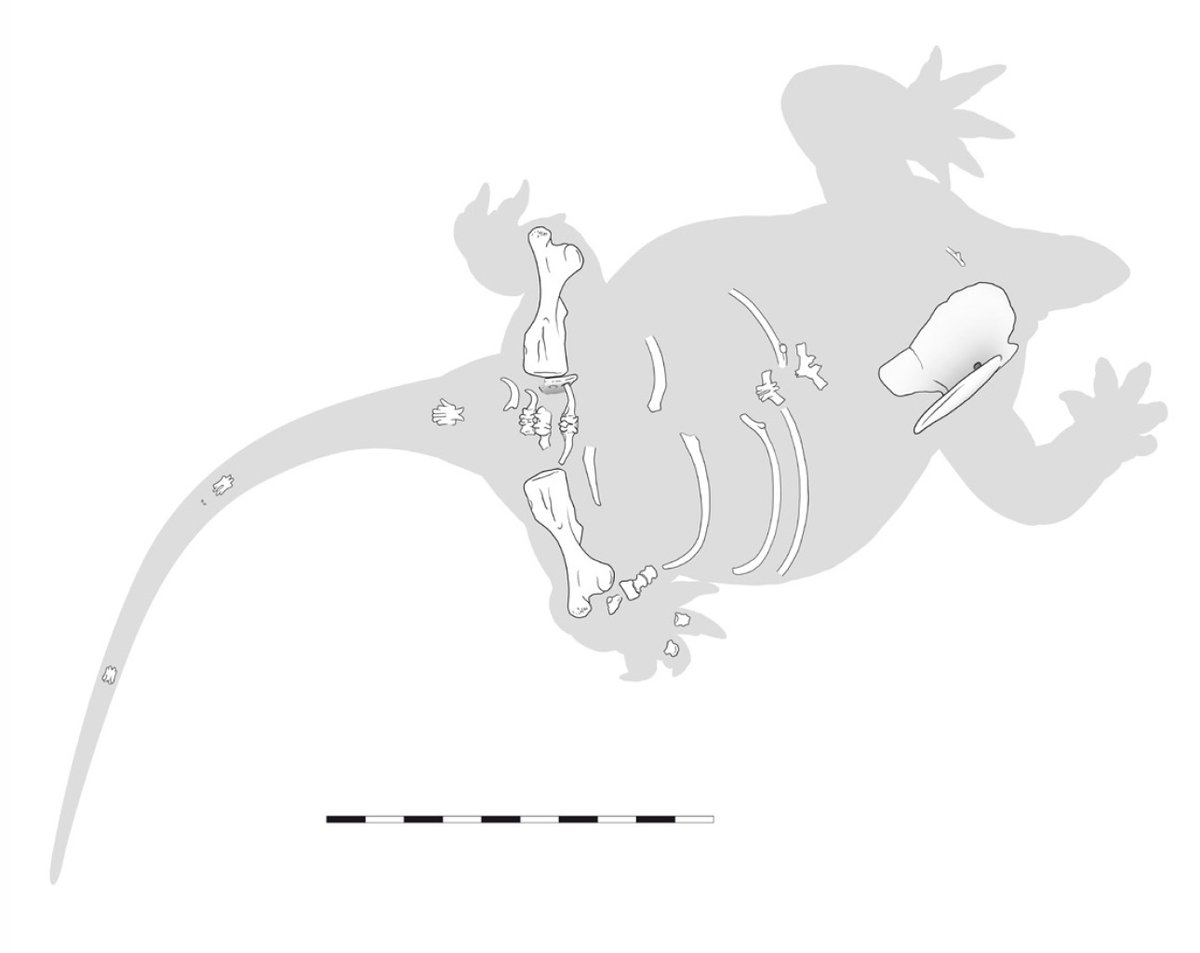
So there you have it, three stories that follow a thread through time. From the earliest animal with a skeleton to a relative of the first vertebrates to walk on land to an early mammal like creature the story of life on Earth is a long and fascinating tale.
